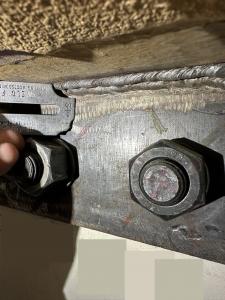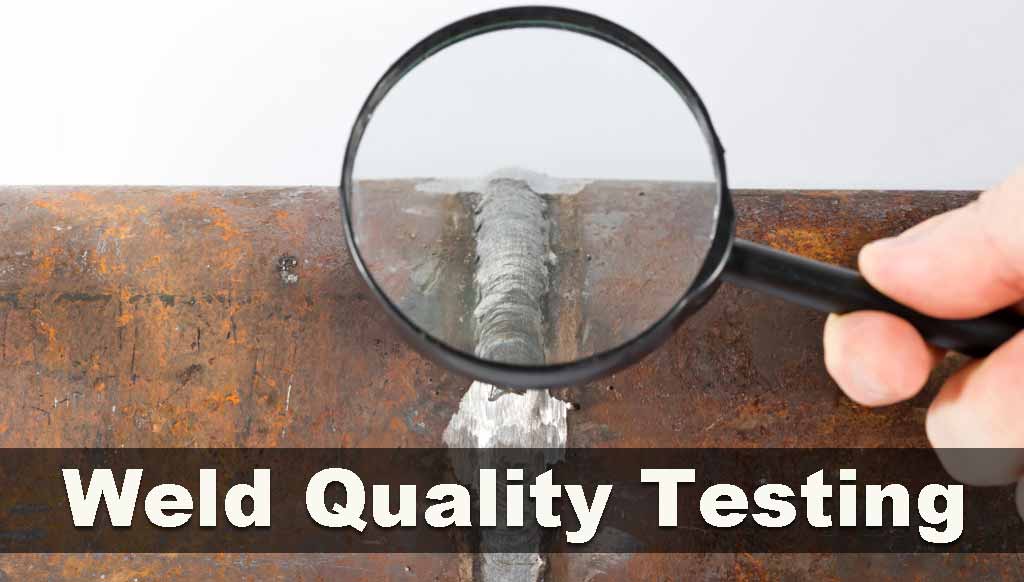A Comprehensive Guide to Welding Evaluation: Comprehending Specifications, Techniques, and Best Practices for Quality Control
Welding inspection plays a pivotal function in making sure the structural integrity and safety of bonded elements, necessitating a detailed understanding of market requirements such as those developed by AWS and ASME. Various examination methods, consisting of ultrasonic and visual testing, are used to spot possible issues that could endanger high quality. Carrying out finest practices can significantly enhance functional integrity and foster count on among customers. As we explore these essential components, it becomes apparent that the ramifications of welding assessment expand far past compliance, welcoming a closer exam of exactly how these procedures shape market standards and practices.
Significance of Welding Assessment
Welding examination plays an essential role in ensuring the stability and safety of bonded frameworks. It is a necessary process that verifies that welds adhere to predefined specifications, which is important in numerous industries, consisting of construction, auto, and aerospace. By carrying out complete inspections, prospective defects such as fractures, insufficient fusion, and porosity can be identified early, stopping catastrophic failures that might bring about accidents or expensive repair services.
The importance of welding inspection expands beyond mere compliance with regulations; it likewise promotes trust fund with stakeholders. Customers and regulatory bodies expect assurance that the frameworks they rely upon are built to stand up to functional anxieties. Efficient welding examination practices contribute to lasting durability and efficiency of the structures, inevitably leading to decreased maintenance expenses.
Furthermore, welding examination advertises a culture of top quality within organizations, urging adherence to finest practices and constant improvement. By integrating inspection processes into the welding operations, companies can improve their credibility and establish themselves as leaders in high quality guarantee. In verdict, the value of welding inspection hinges on its ability to safeguard lives, guarantee structural reliability, and copyright industry criteria, making it an indispensable facet of welding procedures.
Secret Sector Requirements
Ensuring conformity with vital industry standards is crucial for maintaining the quality and security of welded frameworks. Numerous organizations establish these requirements to advertise best techniques in welding and evaluation - Welding Inspection Gilbert Arizona. Among one of the most acknowledged are the American Welding Society (AWS) and the American Society of Mechanical Engineers (ASME), which give comprehensive standards and specifications for welding processes and evaluation requirements
AWS criteria, such as AWS D1.1 for architectural welding, rundown needs for products, layout, and testing to ensure the honesty of welds. Similarly, ASME codes, consisting of ASME Area IX, regulate the credentials of welders and welding treatments, making certain regular high quality in industrial applications. Internationally, the ISO 3834 conventional stresses high quality requirements for blend welding, offering a framework for companies to show compliance with worldwide finest practices.
Compliance with these requirements not only improves the dependability of bonded structures but also reduces risks connected with architectural failures. Furthermore, adherence to market standards is often a prerequisite for regulative approvals and can significantly affect project requirements. Ultimately, understanding and implementing these crucial criteria are important for efficient welding assessment and quality guarantee.
Assessment Techniques Summary
Reliable welding assessment depends on a variety of methods developed to examine the quality and stability of welds. These techniques can be extensively classified into non-destructive and devastating screening (NDT) techniques. Non-destructive screening strategies, which are widely chosen in the industry, enable the analysis of welds without endangering the integrity of the material.

Among the most commonly used NDT methods are aesthetic inspection, ultrasonic screening, radiographic testing, and magnetic particle testing. Aesthetic examination is typically the initial step in the evaluation procedure, allowing assessors to recognize surface blemishes and analyze weld bead accounts. Ultrasonic testing employs high-frequency acoustic waves to discover inner problems and measure the thickness of welds. Radiographic screening involves the use of X-ray or gamma-ray imaging to expose internal defects, while magnetic bit screening works for finding surface and near-surface discontinuities in ferromagnetic products.
Each technique has its very own advantages and restrictions, making it essential for examiners to pick the most appropriate technique based on the specific demands of the job, the materials included, and the urgency of the welds being evaluated. This mindful selection promotes and makes sure extensive evaluations safety and quality standards in welding procedures.
Usual Issues and Their Implications
An extensive understanding of typical flaws in welds is crucial for keeping architectural honesty and safety in bonded constructions. Welding issues can substantially endanger the mechanical homes of the joint, causing failures that might endanger both workers and tools.
Common flaws include porosity, which shows up as tiny gas pockets trapped in the weld metal, weakening the total structure. Fracturing is an additional prevalent problem, often resulting from rapid cooling or inappropriate joint blog layout, leading to stress and anxiety focus that can lead to disastrous failures. Incomplete blend occurs when the weld metal falls short to effectively bond with the base product, creating powerlessness that might lead to separation under load.
Other noteworthy defects include undercutting, where the weld grain erodes the base steel, and slag incorporations, which can prevent the weld's stamina. Each of these problems has certain effects; for instance, porosity can lower ductility, while cracking straight impacts tensile toughness. Recognizing and comprehending these problems during examination is necessary for carrying out restorative actions and guaranteeing compliance with sector standards, eventually guarding the structural stability of bonded assemblies.
Best Practices for Quality Control
Implementing ideal techniques for quality control in welding procedures is necessary for attaining ideal results and minimizing issues. One important practice is the establishment of clear welding treatments that stick to industry standards and specs. These procedures ought to consist of detailed guidelines concerning material selection, joint prep work, and welding strategies to make certain uniformity and quality.
Routine training and certification of welding personnel are additionally essential. Competent welders that comprehend the relevance of top quality assurance are more probable to generate audio welds. In addition, implementing a robust inspection program, including both non-destructive and visual screening (NDT), can assist identify flaws early in the process, enabling timely restorative actions.

Last but not least, fostering a culture of high quality within the company encourages workers to focus on high quality in their job. By adhering to these best techniques, companies can enhance the honesty of their welding processes, ultimately bring about improved item top quality and decreased expenses connected with rework and fixings.

Final Thought
Finally, welding examination plays an essential function in guaranteeing the integrity and safety and security of welded frameworks. Adherence to essential market requirements, such as those developed by AWS and ASME, is necessary for efficient quality control. Utilizing numerous assessment techniques enables the see this page recognition of typical issues, consequently mitigating potential risks. By carrying out finest methods, organizations can enhance dependability, minimize upkeep expenses, and cultivate depend on among customers, inevitably adding to successful welding procedures - Welding Inspection Gilbert Arizona.
Furthermore, welding evaluation promotes a society of quality within organizations, encouraging adherence to ideal practices and continual renovation. In final thought, the importance of welding assessment exists in its capability to guard lives, make sure architectural integrity, and support market criteria, making it a vital aspect of welding operations.
Amongst the most acknowledged are the American Welding Culture (AWS) and the American Culture of Mechanical Designers (ASME), which offer in-depth guidelines and specifications for welding processes and click to find out more evaluation criteria.
Ultimately, understanding and applying these essential requirements are vital for efficient welding assessment and high quality assurance.
Reliable welding inspection depends on a selection of techniques made to analyze the high quality and integrity of welds.